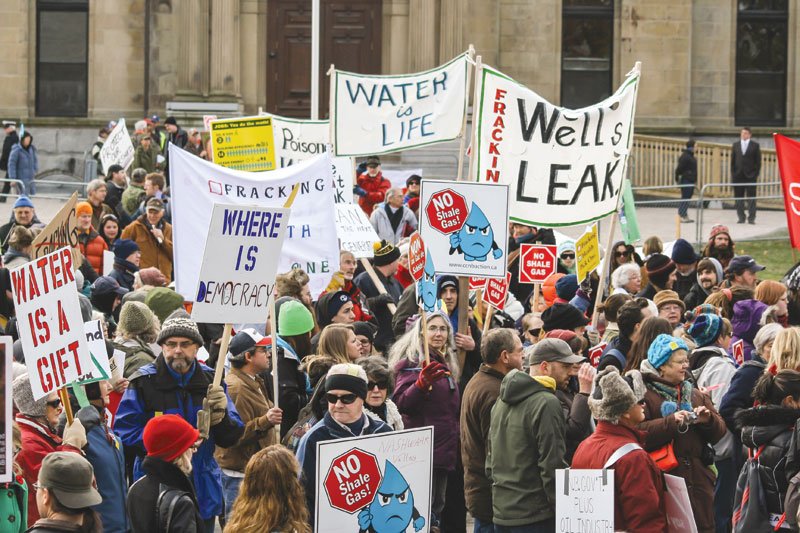
Our Research in Canada
Case Study One
In 2010, the Canadian province of New Brunswick granted rights for a Texas-based energy company to explore the prospect of shale gas extraction, better known as hydraulic fracturing or ‘fracking.’ Demonstrations by concerned citizens began soon after, and gradually built to a stand-off between protesters and police in October 2013. The concerted efforts of protesters eventually led to the provincial government placing a moratorium on fracking in 2014, which has remained in place to this day.
Image credit: Conservation Council of New Brunswick.
Taking a step back from the major clash that made headlines across Canada and around the world, this case study attends to the longer story of community resistance, and highlights the daily practices and non-events through which people build community and everyday democracy. Protests brought together people from across lines of difference: young and old; Francophone and Anglophone; Indigenous and settler. New alliances were forged to create cooperative relationships to carry out the world repairing work of opposing private interference and protecting the environment. Applying media analysis to hundreds of news stories from 2010 to the present, and complemented by examining the movement’s broader terrain, this case study reflects on the quiet collaboration that unfolded between historically diverse constituencies.
Established in 1904, the Haskell Free Library and Opera House literally straddles the border between Canada and the United States of America. The library’s main entrance and offices—as well as most seats in the attached opera house—are located in Derby Line, Vermont. Meanwhile, the library collection and the performance stage are located in Stanstead, Quebec. Though a black line on the floor demarcates the international border, patrons move freely about this communal space. Beyond the library walls, people also fluidly circulate and socialize throughout the region; running errands, joining clubs, or even giving birth on either side of this imposed border.
Case Study Two
A sign on display inside the library, directing visitors to exit through the door (and country) that they arrived from.
Though government restrictions have recently threatened to restrict mobility, this case study explores how people in this community live well together. Analyzing news, social and popular media, and interviewing people who live and work in the region, this study argues that care, trust, and relational equality constitute the real substance of democracy and coexistence. Especially against the backdrop of rising social division, we explore how the practice of living well together resists the ideological, political, and territorial divides that continually test the delicate equilibrium of coexistence.
Exterior of the Haskell Free Library and Opera House. The street and entrance visible in the right side of the photo are located in Vermont. Everything on the left side of the photo is located in Canada.
Meet the Canadian Team
The Canadian Team are



